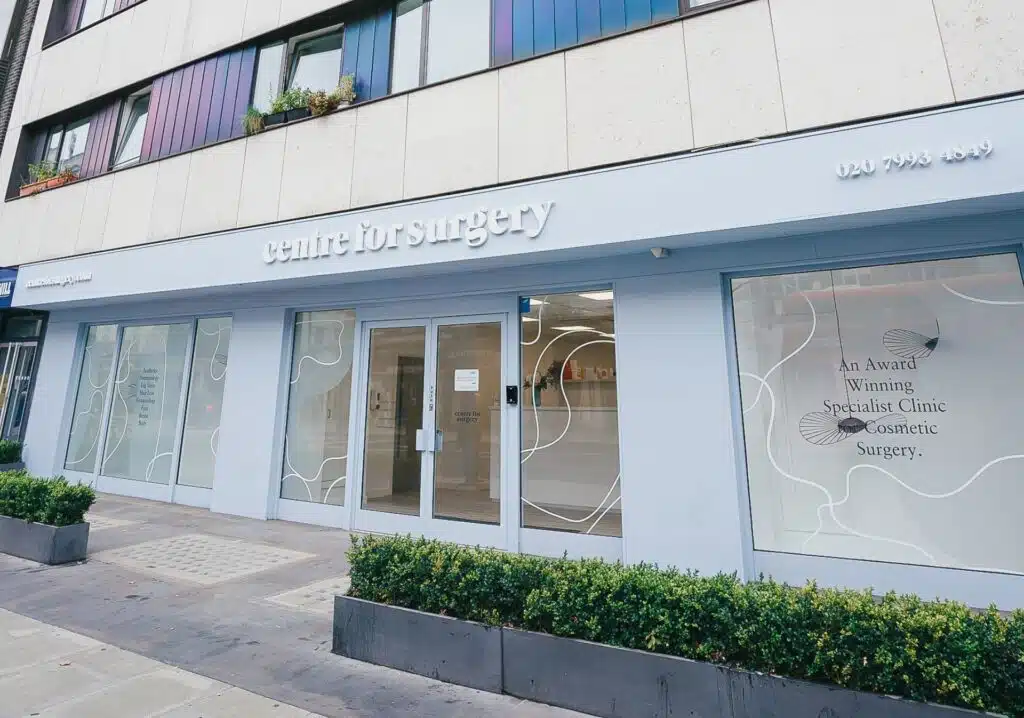Surgical and Non-Surgical Treatments for Swollen Turbinates
Swollen turbinates, often caused by chronic inflammation or allergies, can lead to breathing difficulties and discomfort. Fortunately, surgical and non-surgical options are available for treating this condition.
RELATED: Breathing Better: How Septoplasty and Turbinate Reduction Can Help
What Do Enlarged Turbinates Feel Like?
Enlarged turbinates can significantly impact your nasal airflow, leading to a range of uncomfortable sensations. Although you might not feel the turbinates themselves, the symptoms they cause are quite noticeable. Here’s what you can expect if you have enlarged turbinates:
Persistent Nasal Congestion
One of the most common sensations associated with enlarged turbinates is a feeling of nasal congestion. This feels much like having a stuffy nose, similar to the sensation you get during a cold or allergy attack. Breathing through your nose becomes more difficult because the swollen turbinates obstruct the airflow, making you feel like you’re not getting enough air.
Reduced Airflow
You might notice that you have to breathe through your mouth more often because it feels like you’re not getting sufficient air through your nose. This can happen in one or both nostrils, depending on which turbinates are enlarged. The feeling is akin to trying to breathe through a partially blocked straw—air can get through, but it’s restricted and requires more effort.
Stuffy Sensation
The stuffy feeling associated with enlarged turbinates can be persistent and uncomfortable. It’s similar to the sensation you experience when you have a cold, but without the other typical symptoms like a runny nose or sneezing. This stuffiness might be constant, especially if the enlargement is due to genetic factors rather than temporary causes like a cold or allergies.
Seasonal vs. Persistent Symptoms
If you only experience these symptoms during allergy season or when you’re exposed to irritants like dust or pollution, it’s likely a normal reaction to your environment. In these cases, the turbinates swell temporarily to protect your respiratory system from these irritants. However, if you feel stuffy and congested all the time, even when you’re not sick or surrounded by allergens, it’s possible that you have genetically enlarged turbinates. This means your turbinates are naturally larger and more prone to causing chronic congestion.
Do Swollen Turbinates Go Away on Their Own?
Swollen turbinates can be a source of discomfort, leading to nasal congestion, breathing difficulties, and other related symptoms. Whether or not they go away on their own largely depends on the underlying cause of the swelling.
Temporary Swelling Due to Allergens or Irritants
In many cases, swollen turbinates are a temporary response to allergens or irritants in the air, such as pollen, dust, or smoke. If your body is reacting to these external factors, the swelling of the turbinates may reduce once you are no longer exposed to these irritants. For instance, turbinates can swell as part of your body’s natural defence mechanism during allergy seasons or when exposed to pollutants. In such cases, the swelling often subsides on its own once the exposure is minimised or eliminated.
Persistent Swelling Due to Genetic Factors or Chronic Conditions
However, if you are genetically predisposed to having large turbinates, or if you suffer from chronic conditions like allergic rhinitis or sinusitis, the swelling may not go away on its own. In these situations, the turbinates remain enlarged even in the absence of allergens or irritants, leading to ongoing symptoms that may require medical intervention.
What Happens When Your Turbinates Swell?
Swollen turbinates can significantly impact your ability to breathe comfortably through your nose. The turbinates are structures inside your nasal passages that help filter, humidify, and warm the air you breathe. When these turbinates swell, several things can occur:
Difficulty Breathing
When your turbinates swell, they can obstruct airflow through your nasal passages, making it difficult to breathe through one or both nostrils. This can cause feelings of congestion and a stuffy nose and can even affect your sense of smell. The severity of the breathing difficulty depends on which turbinates are swollen and how much they are obstructing the airway.
The Nasal Cycle and Turbinate Swelling
It’s important to understand that everyone experiences a natural process known as the nasal cycle. During this cycle, the turbinates on one side of your nose swell while those on the other side shrink. This cycle alternates between the two sides of the nose and typically goes unnoticed.
However, during sleep, you might become more aware of this process, especially when you turn over. The side of your nose closest to the pillow may experience more swelling of the turbinates, leading to temporary congestion in that nostril. This is a completely natural phenomenon and usually resolves when the cycle switches to the other side. People with conditions like a deviated septum may notice this more, as one nostril is already narrower, making the swelling more pronounced.
Reaction to Environmental Irritants
Swelling of the turbinates can also occur in response to irritants in the air, such as pollutants, dust, or allergens. When you inhale these irritants, your nasal tissues may react by becoming inflamed and swollen as part of your body’s defence mechanism. This swelling can cause increased congestion and difficulty breathing.
In environments with high levels of pollution or allergens, this reaction may be more frequent and severe, leading to chronic or recurrent symptoms.
Impact on Quality of Life
Persistent turbinate swelling can disrupt daily activities and sleep, leading to fatigue, reduced concentration, and overall discomfort. If the swelling is due to environmental factors, managing exposure to these irritants can help alleviate symptoms. In cases where the swelling is related to underlying anatomical issues or chronic conditions, medical or surgical treatment may be necessary to provide relief.
Treatment Options for Persistent Swelling
When turbinates remain swollen and cause significant symptoms, medical or surgical therapy may be necessary.
- Medical therapy often includes the use of nasal steroid sprays, antihistamines, or decongestants to manage the inflammation.
- Surgical options may be considered if medical therapy is ineffective. Procedures like turbinoplasty or radiofrequency ablation can reduce the size of the turbinates, providing more permanent relief.
Non-Surgical Treatments for Enlarged Turbinates
If you’re experiencing discomfort from enlarged turbinates, several non-surgical treatment options can help alleviate symptoms. These treatments are designed to reduce inflammation, improve nasal airflow, and manage the underlying causes of turbinate enlargement.
1. Nasal Steroid Sprays
Nasal corticosteroid sprays are one of the most common non-surgical treatments for enlarged turbinates. These sprays reduce inflammation within the nasal passages, helping shrink the turbinates and relieve congestion. They are usually applied daily and can be effective in managing symptoms, especially for those with allergies or chronic sinus issues.
2. Antihistamines
If your turbinate swelling is related to allergies, antihistamines can be very effective. These medications block the action of histamine, a chemical released during allergic reactions, which can reduce swelling and nasal congestion. Antihistamines are available in both oral and nasal spray forms and are particularly useful during allergy seasons.
3. Nasal Saline Irrigation
Saline nasal irrigation, often done with a neti pot or a saline spray, can help flush out irritants and allergens from your nasal passages. This helps reduce inflammation and congestion by keeping the nasal passages clear and moist. It’s a gentle and natural way to alleviate the symptoms associated with enlarged turbinates.
4. Decongestants
Decongestants are another option for temporarily reducing turbinate swelling. These medications shrink the blood vessels in the nasal passages, decreasing swelling and improving airflow. However, they should be used with caution and only for short periods, as prolonged use can lead to rebound congestion, where the symptoms worsen once the medication is stopped.
5. Allergy Management
For those whose turbinate enlargement is caused by allergic reactions, allergy management is key. This can include avoiding known allergens, using air purifiers to reduce airborne irritants, and possibly undergoing allergy immunotherapy (allergy shots) to desensitise the body to specific allergens over time.
RELATED: Can Nose Surgery Treat Nose Allergies?
Surgical Options
Surgical options may be considered if non-surgical treatments do not provide sufficient relief. These procedures are designed to reduce the size of the turbinates or correct structural issues within the nose that contribute to swelling.
Turbinoplasty:
Turbinoplasty is a surgical procedure where the surgeon removes or repositions a portion of the turbinate tissue to create more space in the nasal passages, thereby improving airflow.
Submucosal Resection (SMR):
This involves removing the underlying bone within the turbinate to reduce its size while preserving the mucosal lining, which helps maintain the natural function of the nasal passages.
RELATED: Narrow Nostril Surgery for Fixing Breathing Difficulties
Why Choose Centre for Surgery?
Expertise: Our team consists of highly skilled surgeons who are leaders in their fields, offering advanced surgical and non-surgical treatments.
Personalised Care: We provide bespoke treatment plans tailored to each patient’s unique needs and goals.
Cutting-Edge Technology: We use the latest techniques and state-of-the-art equipment to ensure the best possible outcomes.
Patient-Centred Approach: Your safety, comfort, and satisfaction are our top priorities, ensuring a seamless and supportive experience from consultation to recovery.
Reputation: Known for excellence in cosmetic and reconstructive surgery, we are a trusted choice for patients seeking the highest standard of care.










